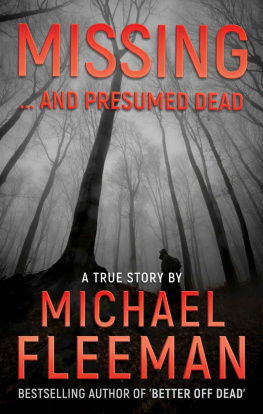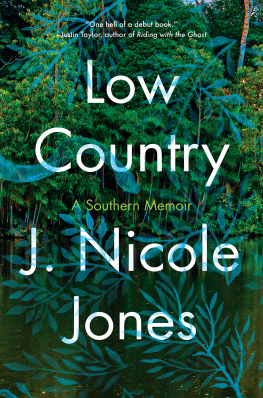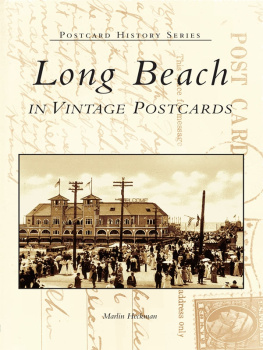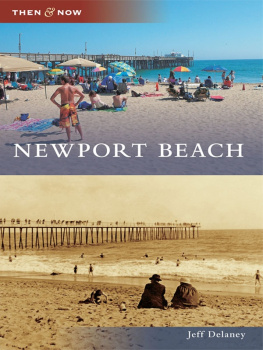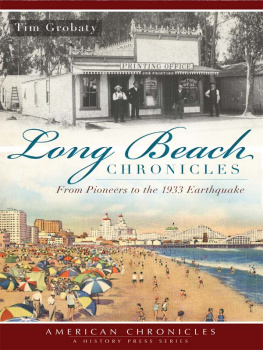
Published by The History Press
Charleston, SC 29403
www.historypress.net
Copyright 2014 by Becky Billingsley
All rights reserved
First published 2014
e-book edition 2014
ISBN 978.1.62584.922.9
Library of Congress Cataloging-in-Publication Data
Billingsley, Becky.
Lost Myrtle Beach / Becky Billingsley.
pages cm
print edition ISBN 978-1-62619-392-5 (paperback)
1. Myrtle Beach (S.C.)--History--20th century. 2. Myrtle Beach (S.C.)--Buildings, structures, etc. 3. Seaside resorts--South Carolina--Myrtle Beach--History--20th century. 4. Myrtle Beach (S.C.)--Social life and customs--20th century. I. Title.
F279.M93B43 2014
975.787--dc23
2014018001
Notice: The information in this book is true and complete to the best of our knowledge. It is offered without guarantee on the part of the author or The History Press. The author and The History Press disclaim all liability in connection with the use of this book.
All rights reserved. No part of this book may be reproduced or transmitted in any form whatsoever without prior written permission from the publisher except in the case of brief quotations embodied in critical articles and reviews.
CONTENTS
FOREWORD
When we look at Myrtle Beach today, we see all the lifestylesfrom relaxed retirees to busy hospitality worker beesand the entertainment going on, and we plan our activities around them. However, it is important to look at happenings from years ago that were overlooked, lost or changed that influence what we see today.
We lost great landscapes and views to development with the clear-cutting of dense forests and beachfront properties verdure to make way for magnificent hotels and homes. These are required for living and visiting here, but they took the place of older and architecturally significant beach homes and businesses.
Some of these were well-constructed, well-kept and comfortable buildings for hardy souls who moved here and embraced the beach lifestyle in their personal lives and businesses. They preserved the lush, natural landscapes that were here for previous generations. We had forests of yaupon holly, wax myrtles, longleaf pines, natural magnolia growths, sea grasses and hickories, but they were replaced by imported palms of many types that are now in their northernmost ranges and dont provide lush, shady spots. We cannot see around, over or through the oceanfront development to enjoy a wide view of the ocean.
Most of the fabulous places of the earlier years were not preserved for their architecture and history.
We recall the Seaside Inn, which was built on a walkway to the beach. It was situated far back from the oceanfront, so as to be useful and compatible to many families for many years, before being moved. The Ocean Forest area was also built back from the beach so all who were there could enjoy the view and relax in an area of beautifully maintained natural growth. There again a planned and maintained architecture was built for local beauty, not an imported style.
The whole downtown area around Seventh and Eighth Avenues North was anchored by the Flatiron Building, and across the street was the widely recognized and loved Myrtle Beach Pavilion, where visitors always went on their first day at Myrtle Beach. Both are gone.
Our beach uses have been changed and curtailed by local businesses and lines of use, which do not allow free and comfortable access to the ocean for families and children. Hotels or beach services set out lines of chairs and umbrellas and are quick to tell people who bring their own beach gear where they may or may not sit down. This is not the spirit of public beach access.
Does anyone remember driving on the beach at low tide in your Jeep or on your sand sail boat? Do you recall a secret walk on the beach at 2:00 a.m. after parking at a tree-covered spot? Or walking on the beach as you heard the sounds of the Kay Kaiser band playing on the moonlit terrace at the Ocean Forest? And do you recall skinny-dipping in the ocean after midnight?
I hope that remembering what is lost will inspire people to speak up and let city leaders know we want our past preserved and our beaches in natural states before even more of our heritage is forever lost.
BARBARA WARD HORNER
News Archivist at the Sun News
19872008
ACKNOWLEDGEMENTS
Myrtle Beach natives love where they grew up, and millions of annual visitors return each year for traditional family vacations. They may not be overjoyed with summer traffic snarls, but people feel strong affinities for the ocean and beaches, forests, rivers, seafood, parties, nightlife, concerts, theater shows, motorcycle rallies, miniature golf, amusement parks, fishing, parasailing, banner planes, restaurants, beach stores and the rest of the vibrant spectacle for which Myrtle Beach is known.
Thank you to those who kindly shared their experiences regarding Myrtle Beachs colorful history. You gave honest answers to earnest questions, and perhaps those answers will help preserve other pieces of your heritage. Many local residents contributed interviews and photos, and you will meet them as you read Lost Myrtle Beach. As much as possible their recollections are documented in their own words.
Specific thanks go to:
Barbara Horner, who presented me with a shoebox full of Sun News history column clippings she diligently saved during the twenty years she was the newspapers archivist. It was a pleasure to read them and reference those historians work. She also shared a lifetime of coastal reminiscences.
Transcriptionist and researcher David Schwartz, who helped this project meet a tight deadline. It was handy having a son, Adam Billingsley, who worked at Hard Rock Park and Freestyle Music Park and could edit and enhance that section.
Jack Bourne, a local historian and photo archivist who showed me photos and filled in many gaps. Jack introduced me to his mom and stepdad (Ed and Joyce Herian), and they explained the past with vivid, entertaining stories while we munched Joyces excellent snickerdoodles.
Marion Haynes at the Horry County Museum, who was extremely helpful by pointing me to delightful vintage images.
Horry County Board of Architectural Review charter member and local architect Joel Carter, city of Myrtle Beach Planning director Jack Walker and senior planner Diane Moskow-McKenzie, who provided invaluable insight into the work that remains to be done to ensure Myrtle Beachs historic properties remain for future generations to enjoy and appreciate. The key, they say, is to speak up!
INTRODUCTION
The history of Myrtle Beach is a joyous, tumultuous and wildly interesting story. As of 2014, it has been an incorporated city for seventy-six years, but Myrtle Beachs unique geography helped its residents pack what would normally be a few centuries worth of living into a much tighter timespan.
New traditions will be made, but this is a chronicle of what has been lost. These are the voices and opinions of locals and visitors from the previous three hundred years that have been collected so they, too, are not lost.
Locals interviewed for this book feel extreme sadness for some of Myrtle Beachs lost places and traditions. They understand the world moves on and they cant live in a time capsule, but many want to see more of the citys past preserved.
It is to be expected that a tourist area like Myrtle Beach would tear down old structures to make room for new and bigger ones that can house the millions of visitors who come each year, but some that are gone leave sore spots in the hearts of those who loved them. The Chesterfield Inn, the Ocean Forest Hotel and the Myrtle Beach Pavilion are places of particular note that are missed. The Sun Fun Festival isnt a place, but those who enjoyed it for sixty years cherished the celebrities and parade and cheerful beach games.
Next page




